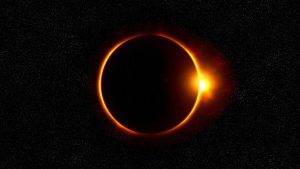A SPECIAL BULLETIN from ECRM’s SAFETY TEAM

With all the excitement of this monumental event, many companies have planned special activities including eclipse parties and special breaks to allow employees to stop their work, step outside, and experience this amazing phenomenon.
If your employees are planning to view the eclipse, whether you are in the “path of totality” or not, here are a few important reminders from NASA to keep those eyes safe:
- Homemade filters or ordinary sunglasses, even very dark ones, are not safe for looking at the sun; they transmit thousands of times too much sunlight.
- The only safe way to look directly at the uneclipsed or partially eclipsed sun is through special-purpose solar filters, such as “eclipse glasses” or hand-held solar viewers that are compliant with the ISO 12312-2.
- Always inspect your solar filter before use; if scratched or damaged, discard it. Read and follow any instructions printed on or packaged with the filter.
- Stand still and cover your eyes with your eclipse glasses or solar viewer before looking up at the bright sun. After looking at the sun, turn away and remove your filter — do not remove it while looking at the sun.
- Do not look at the uneclipsed or partially eclipsed sun through an unfiltered camera, telescope, binoculars, or other optical device.
- Similarly, do not look at the sun through a camera, a telescope, binoculars, or any other optical device while using your eclipse glasses or hand-held solar viewer — the concentrated solar rays will damage the filter and enter your eye(s), causing serious injury.
- If you are within the path of totality, remove your solar filter only when the moon completely covers the sun’s bright face and it suddenly gets quite dark. Experience totality, then, as soon as the bright sun begins to reappear, replace your solar viewer to look at the remaining partial phases.
- Outside the path of totality, you must always use a safe solar filter to view the sun directly.
- If you normally wear eyeglasses, keep them on. Put your eclipse glasses on over them, or hold your handheld viewer in front of them.
If you don’t have a proper solar filter, consider the following suggestion from NASA:
“An alternative method for safe viewing of the partially eclipsed sun is pinhole projection. For example, cross the outstretched, slightly open fingers of one hand over the outstretched, slightly open fingers of the other, creating a waffle pattern. With your back to the sun, look at your hands’ shadow on the ground. The little spaces between your fingers will project a grid of small images on the ground, showing the sun as a crescent during the partial phases of the eclipse. Or just look at the shadow of a leafy tree during the partial eclipse; you’ll see the ground dappled with crescent Suns projected by the tiny spaces between the leaves.”
Perhaps the safest way to view the event is to watch NASA’s live stream of the eclipse!
If your employees will be driving, make sure they remember a few basic safety rules:
- Do not stop in the middle of the road to view the eclipse. Move your car off the road, to a safe location.
- Take care not to trespass on the personal property of others.
- Keep your headlights on, and don’t rely on automatic headlights.
- Do not wear your eclipse glasses, while driving.
- Do not try and photograph the eclipse while driving.
- Be mindful, that pedestrians will be walking around looking in the sky, and not watching for cars.
- Plan your trip accordingly to allow for extra congestion on the roads during the eclipse period.
By keeping these safety tips in mind, you and your employees can safely enjoy this amazing spectacle.
ECRM’s team of safety professionals provides full-service safety consulting and safety training. For more information, contact us today by calling 724-864-8745 or emailing us at info@eastcoastrm.com.

